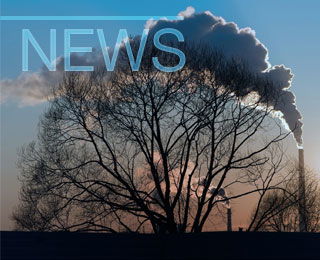Biodiversity Conservation Alliance’s lawsuit against the Mountain Cement Company began Monday with opening arguments by Biodiversity’s lawyers contending that the cement factory repeatedly violated its emissions permit. Mountain Cement’s attorneys countered that excesses of what is allowed by the permit were within the five per cent limit that the Department of Environmental Quality usually allows.
In Federal District Court in Cheyenne, jurors heard arguments and the testimony of one of Biodiversity’s witnesses in the civil trial. The trial is scheduled to continue until Friday. The Sierra Club is a co-plaintiff along with Biodiversity.
There are two kilns at Mountain Cement, each with an attached smoke stack. Kiln No. 1 collects dust in a “bag house,” and kiln No. 2 collects dust with an electrostatic precipitator that charges particles as they pass through the system and then attracts them to a metal collecting plate. The bag house system is clean enough to not violate the permit. The permit is designed to maintain the standards set out in the federal Clean Air Act. Kiln No. 2 is less clean and is the cause of the repeated violations, according to Biodiversity.
Biodiversity’s lawyer, Reed Zars, said violations occur in kiln No. 2 when the opacity of the plume coming from the smoke stack exceeds 20 percent. Opacity is the amount of light that penetrates the plume. When it is crystal clear and all of the light goes through, there is zero percent opacity, and when no light penetrates, opacity is at 100 percent. Mountain Cement routinely exceeds 20 per cent opacity, Zars said.
Mountain Cement concedes that kiln No. 2 is less efficient than kiln No. 1, but lawyer Jim Harris said that excess of the 20 per cent opacity standard only came during kiln start up, shut down or malfunction. Periods of kiln start up, shut down or malfunction are exempt from the opacity regulations under the permit. The remaining instances occurred less than 5 percent of the time and therefore aren’t considered violations by the Department of Environmental Quality, Harris said. “The fact that you have an exceedence doesn’t mean you have a violation,” Harris said.
Harris also noted that the fact that the state hasn’t joined the lawsuit demonstrates that there are no permit violations. The state issues the permit and is charged with enforcing it, he said, and since the Department of Environmental Quality operates under a “5 percent rule” there is no basis for the lawsuit. The Department of Environmental Quality generally takes no action against a company if the company is in permit compliance 95 percent of the time.
The sole witness, Dan Olson, Administrator of the Air Quality Division for Wyoming Department of Environmental Quality, was only questioned by Biodiversity. (Mountain Cement will have the opportunity to question him later in the week.) In response to Zars’ questions, Olson said that the permit, which is issued by his office, is enforceable by citizens and they don’t have to prove personal harm or pollution in the ambient air around Laramie to demonstrate a violation. He also said that the “5 percent rule” isn’t a part of the permit and isn’t a formal rule in the Department of Environmental Quality. It is an accepted operating policy, however.
